
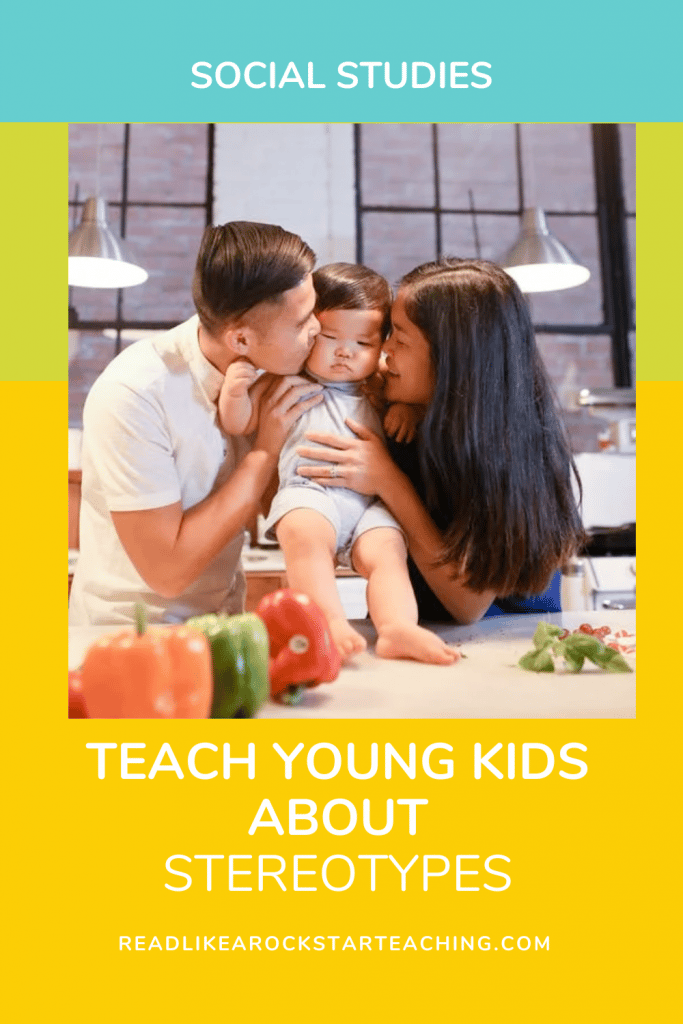
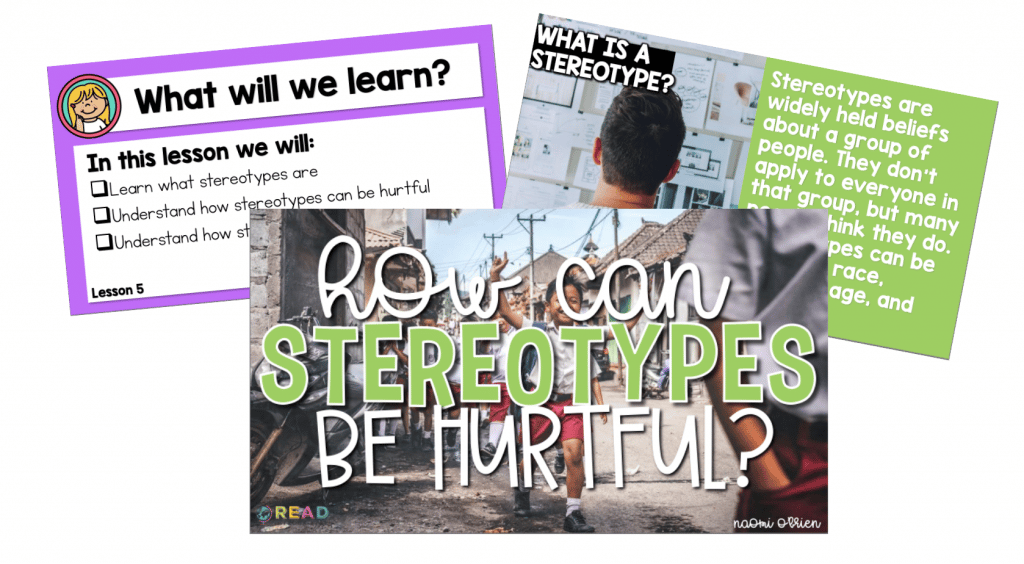
If you have been talking to your kids about diversity, race, identity, and bias, you can teach young kids about stereotypes! They all build on one another and you will quickly see how the groundwork for how one can lead to another (lack of diversity can lead to biases, stereotypes, and racism). Whether we want to believe them or not, we all know of stereotypes about different groups of people. Stereotypes, like biases, come from all sorts of places:
-the sports we watch (If you are only watching men’s sports, kids may think women don’t play.)
-the books we read (Are all the authors of one group? You may be left with the impression that one group is the “expert” and others are not.)
-the TV/news we consume (Does it all lean one way? Tell the same story?)
-the people we interact with (Who are our friends and co-workers? Who are our neighbors?)
Stereotypes say ALL the people in a certain group are exactly the same. ALL girls must love pink, while boys must like blue. ALL Black people are great at sports, ALL Asians are good at math, and on and on. While some stereotypes may feel positive, they still do harm.
You may wonder, what’s wrong with buying into the model minority myth, for example. The one that says Asians are quiet, smart, good at math, and hardworking? Isn’t this a “good” assumption? It still is not. Not all Asians are good at these things, may not want to pursue these things, and may not want to be docile and quiet. It may gloss over children in classes who are struggling in math because the teacher made assumptions. They may be put in remedial English classes because their English must not be good. (These are based on actual experiences of people I know.) Meanwhile, if the teacher had taken the time to get to know the child, they may realize that Shanti, an Indian girl born to immigrant parents in the United States, speaks perfect English, hates math (and needs some extra TLC), and loves basketball.
Stereotypes add to assumptions we make of people and in turn, how we treat them. If stereotypes are negative, then we know what happens.
-Black boys and men are on the receiving end of extra violence, they are singled out in school, and thought of as disruptive and threatening, especially compared to other students.
-Women may be overlooked for job promotions because they are not palatable, they don’t “feel” like a leader. (And if she does, then she is mean and aggressive.)
-Indigenous folks may have trouble getting jobs due to their style of dress, hair, and/or tattoos.
-Trans folk do not fit into our ideas of femininity/masculinity and are ostracized.
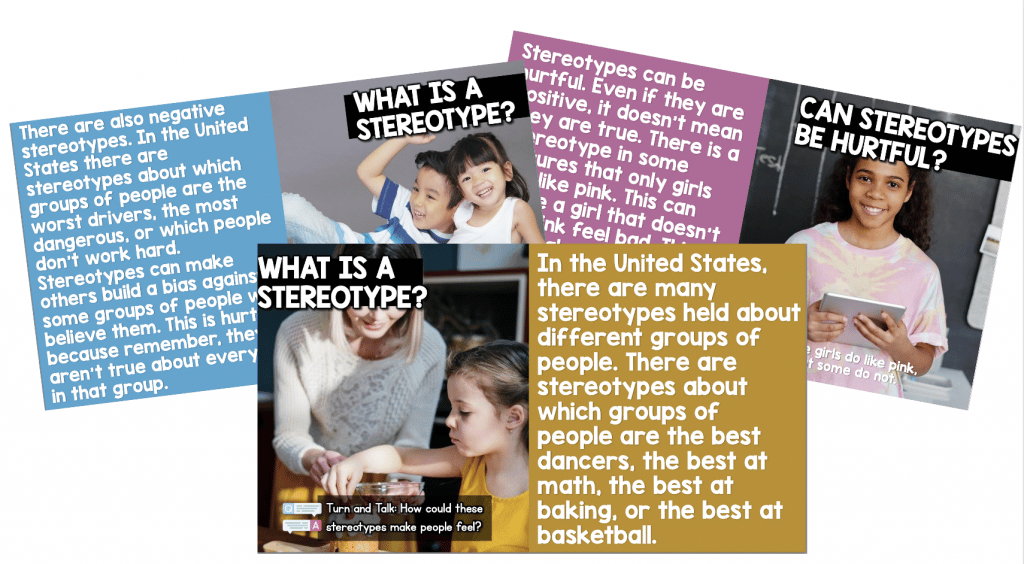
We must teach young kids about stereotypes because similar to biases, kids (and adults) make decisions based on stereotypes they hold. Kids also soak up information from everywhere- school, TV, friends, and caregivers. While you teach kids about stereotypes, they should be able to understand that stereotypes are hurtful, no matter what it is. It colors our ideas, and doesn’t let the person in front of us stand on their own merit. It doesn’t allow room for growth, change, and general acceptance. People are constrained and it becomes harder to be our true selves.
For example:
-If I am a woman who does not want to have children, but the general stereotype is women are nurturing, and caring, it does not give me room to be myself. I will be constantly asked and judged as to why I do not want to follow this path.
-If I am an Asian child who hates math, it would be so frustrating to constantly be asked why I hate math, why am I bad at it, aren’t all Asians good at this?
-If I am a boy who loves to dance and wear dresses, again, people will comment and challenge my choices, because I am not following the mold of what all boys should be doing. It can also open me up to bullying and teasing.
After learning about both these concepts (bias and stereotypes), kids can ask themselves:
How do I choose my friends?
How do I decide who to partner with in class?
How do I decide what I think about someone new?
What comments do I make and why?
What can I do to learn more about _______?
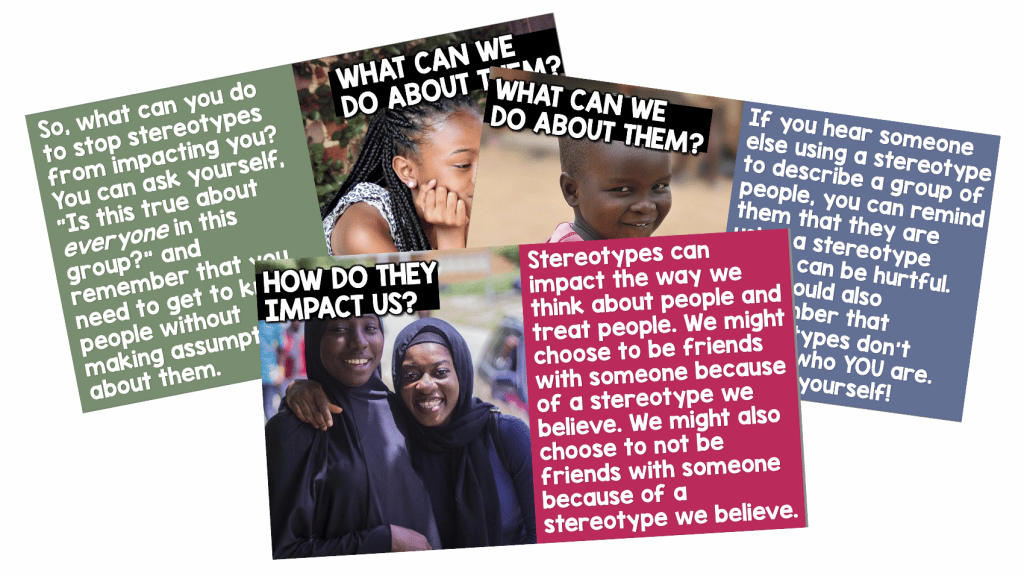
When I teach young kids about stereotypes, and then pose questions like, “What do ALL boys do or like?” they are stumped. They eventually say, “I’m not sure. Not all boys are the same.” BINGO! That’s what we were looking for, and you’re right, they are not.
We were then able to name the word stereotype and bias, and catch it in the world around us.
Whenever my students make a generalized statement about a group of people I always say, “Wow! You asked everyone in the world that question and you know that to be true for EVERYONE?” They quickly begin to catch themselves and adjust their language when discussing entire groups of people.
When we begin to teach young kids about stereotypes, unfortunately some adults may get anxious at the potential for push back.
In a lesson I created, I included easy teacher guides to help you on your way, as well as parent/caregiver communication to ease the nerves. Being upfront and open can make things easier. Also included are worksheets which help kids identify their own stereotypes, explain how stereotypes are hurtful, and then introduce themselves.
If you are a parent/caregiver, this is definitely something you can teach at home. These topics are actually a rich treasure trove in uncovering thoughts your kids already have, as well as nudging them deeper when needed. When life happens at school, or when kids are closed off, I find this gives us a common language to use.
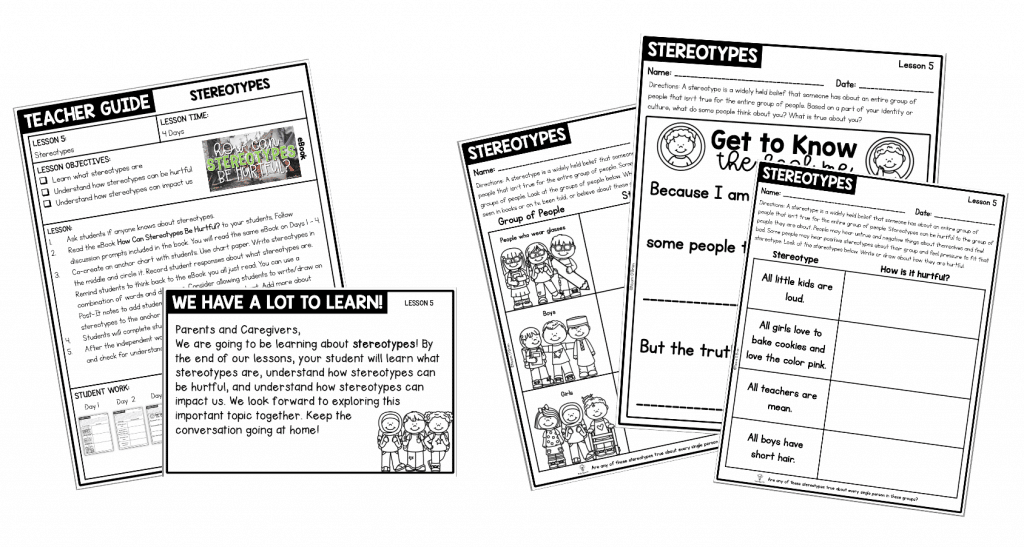
While you can google and find endless books to help teach young kids about stereotypes, here are some titles to get you started. You can pull out a stereotype conversation with almost any book, especially if you are reading diverse stories. Another added benefit of reading diverse stories, is kids won’t develop stereotypes as easily in the first place. You can ask students what they think about a topic before and after reading. Help them identify how they may have had or heard of some stereotypes of groups of people. Reading itself is a great way to challenge beliefs when we cannot have all the experiences.
All the books listed for diversity, race, identity, and bias are also great to use to teach young kids about stereotypes.
Some good follow up questions to ask while reading these stories:
Have you ever tried building perspective through picture books? Read about it here!
The resource shown in this blog post can be found by clicking here.
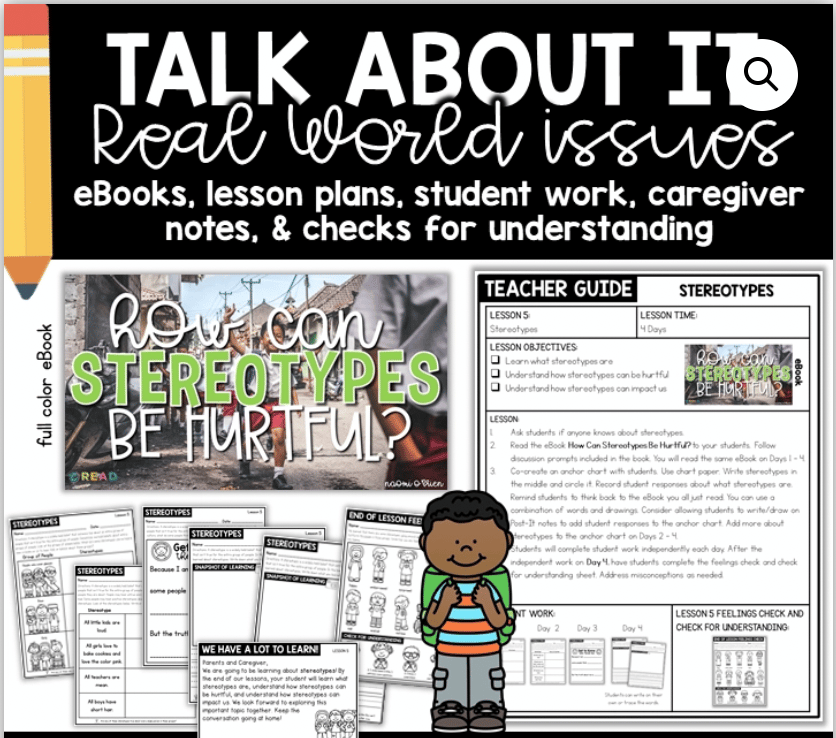


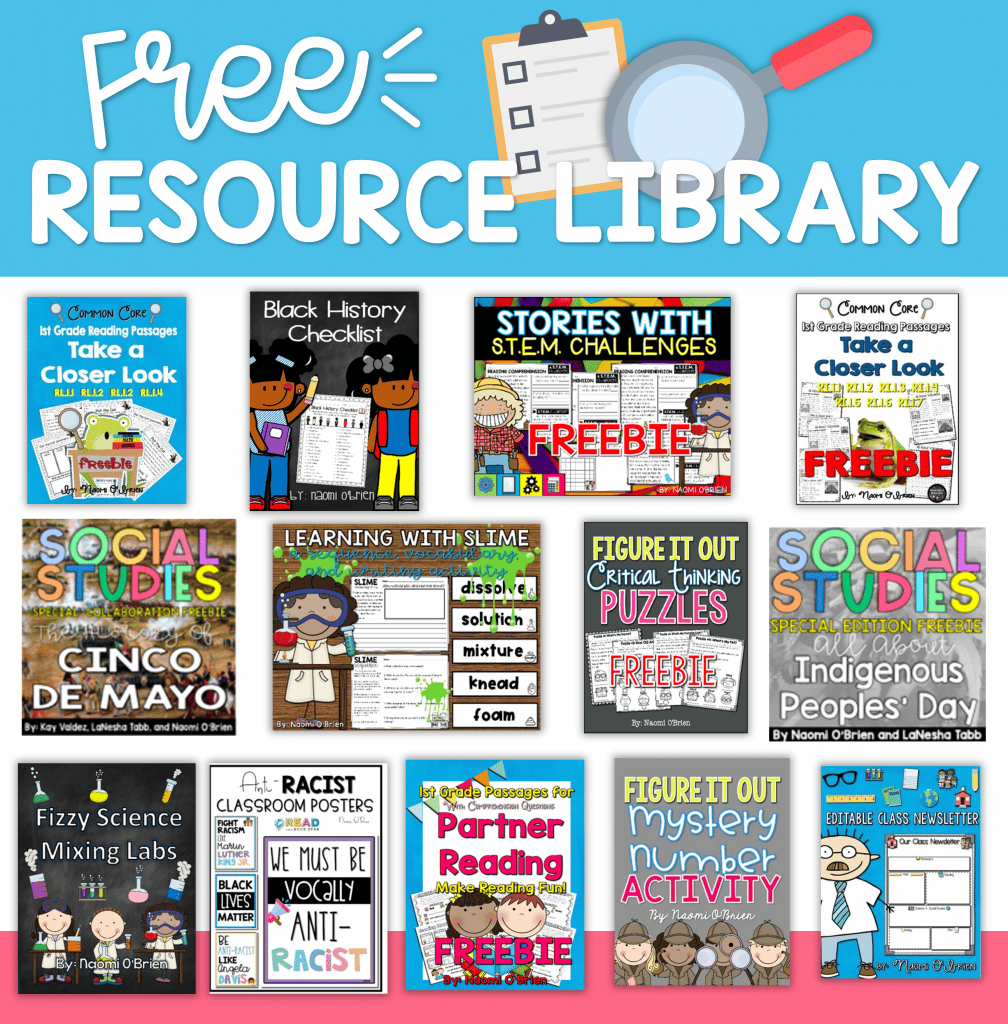
| Cookie | Duration | Description |
|---|---|---|
| cookielawinfo-checkbox-analytics | 11 months | This cookie is set by GDPR Cookie Consent plugin. The cookie is used to store the user consent for the cookies in the category "Analytics". |
| cookielawinfo-checkbox-functional | 11 months | The cookie is set by GDPR cookie consent to record the user consent for the cookies in the category "Functional". |
| cookielawinfo-checkbox-necessary | 11 months | This cookie is set by GDPR Cookie Consent plugin. The cookies is used to store the user consent for the cookies in the category "Necessary". |
| cookielawinfo-checkbox-others | 11 months | This cookie is set by GDPR Cookie Consent plugin. The cookie is used to store the user consent for the cookies in the category "Other. |
| cookielawinfo-checkbox-performance | 11 months | This cookie is set by GDPR Cookie Consent plugin. The cookie is used to store the user consent for the cookies in the category "Performance". |
| viewed_cookie_policy | 11 months | The cookie is set by the GDPR Cookie Consent plugin and is used to store whether or not user has consented to the use of cookies. It does not store any personal data. |
Thank you for your interest in booking a private professional development experience! Please fill out our Booking Inquiry form and a member of our team will contact you soon.